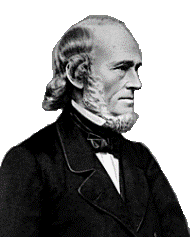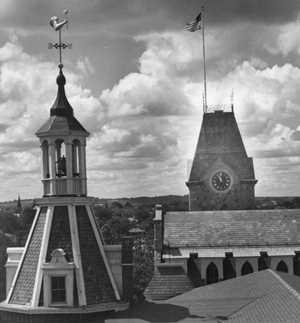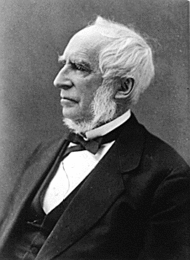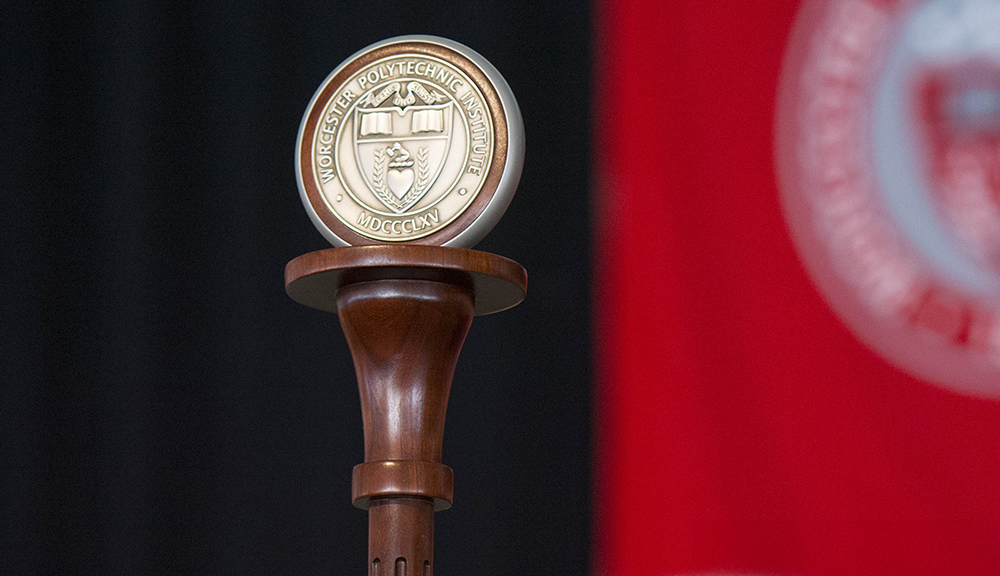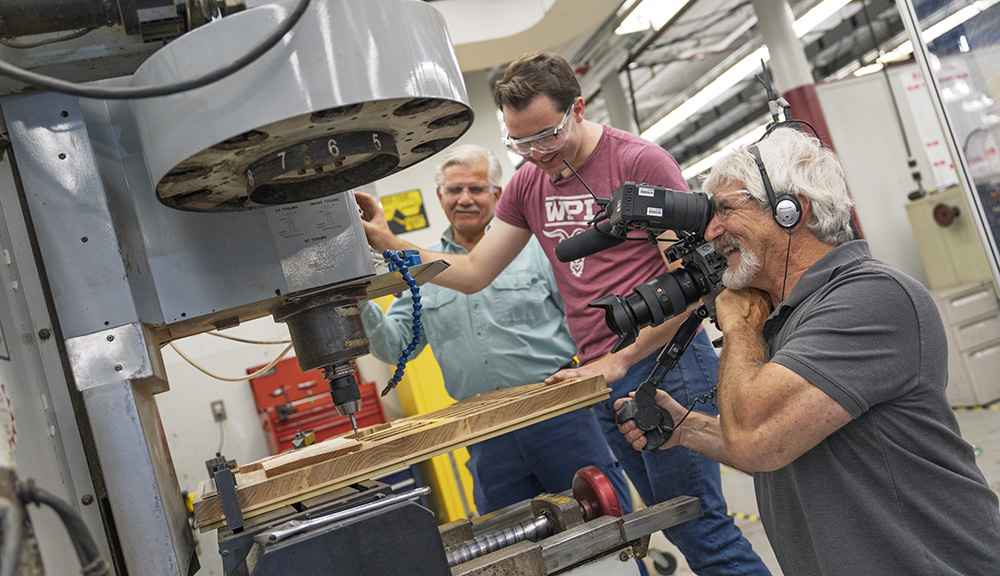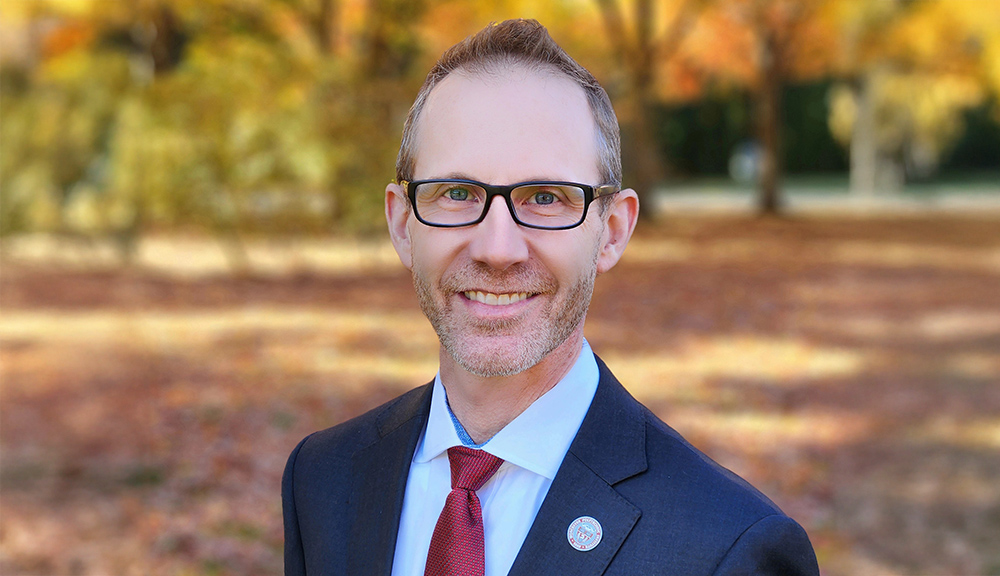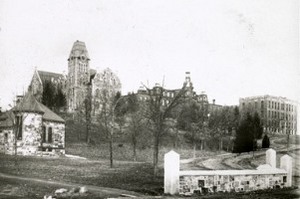
The campus in the 1880s. From left, atop the
hill, Boynton Hall, Washburn Shops, and
Salisbury Laboratories.
WPI exists today because three men with different backgrounds and different ideas about education were united through acts of generosity. These are their stories.
The first of these men was shaped by his hardscrabble youth in New Hampshire. John Boynton had little opportunity for formal education while laboring on his father's farm in Mason (he was able to learn only the rudiments of reading, writing, and "ciphering to the rule of 3" in Mason's one-room schoolhouse). Determined to rise above his humble roots, he left home at the age of 30 to learn the craft of manufacturing tinware.
While the machinery of the industrial revolution was ramping up in the early 19th century, entrepreneurs could still do well handcrafting cookware, storage containers, and other household goods from tin. Boynton eventually moved his manufacturing operation to Templeton, Mass., where his metal stampers and decorators supplied a team of peddlers in horse-drawn wagons who distributed his goods throughout New England, making him, ultimately, a wealthy man.
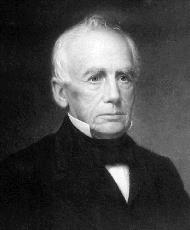
John Boynton
When he turned 55, he sold the business to his cousin, David Whitcomb, and retired. He had a second, brief career in banking, but in the waning days of the Civil War, as he reached his 70s, Boynton resolved to use his fortune to help others avoid the hard life he'd known in his youth. He decided to use the bulk of his estate, $100,000, to create a new kind of college that would provide a practical education to the professional and working classes, including mechanics, craftsmen, and farmers (most colleges at the time taught the classics to future doctors, lawyers, clergymen, and teachers; he knew that an expanding industrial economy would also need educated people to assume leadership positions in manufacturing and commerce).
He entrusted his idea to Whitcomb, who brought it to a group of Worcester's most prominent thinkers and power brokers. He told Whitcomb that while he would endow the new school, the citizens of Worcester would have to provide it with a building. Having planted a seed, Boynton remained in the background while others set to work to nurture his vision.
Boynton was not the only successful businessman in Worcester Country to dream about starting a technically oriented college. Ichabod Washburn, who had parlayed his early success as a blacksmith into a mighty manufacturing enterprise, wanted to replace the traditional apprenticeship system with a formal education that would steep tradesman in the principles of chemistry and mechanics. He came close to realizing this vision in the 1859s, but an economic downturn had left potential investors short of funds.
